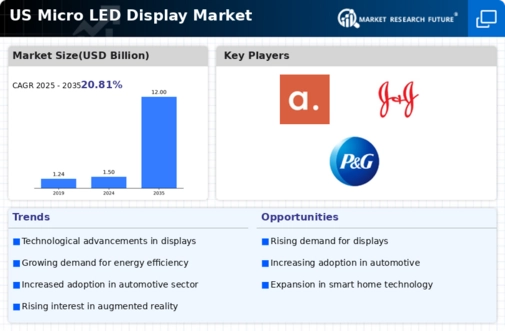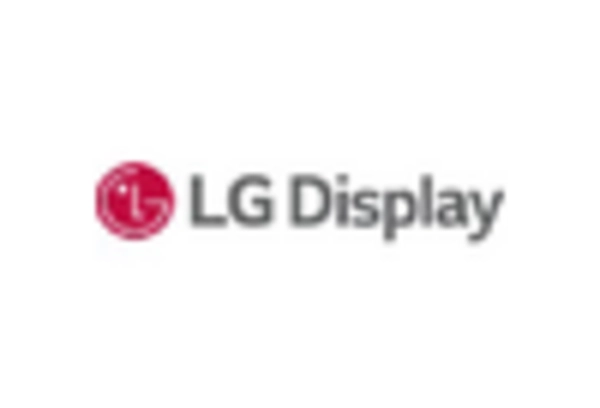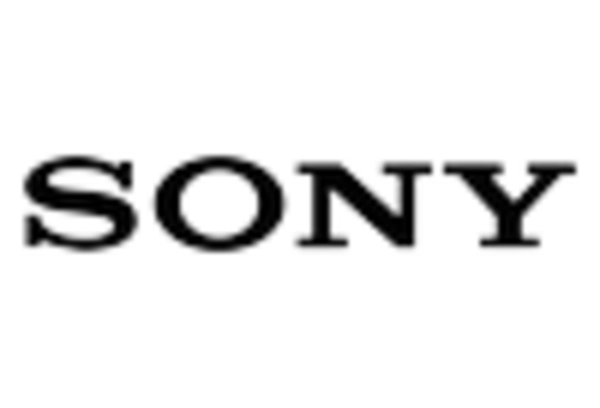Expansion of Smart Home Technologies
The integration of micro led displays into smart home technologies is becoming increasingly prevalent, driving growth in the micro led-display market. As smart home devices gain traction, the demand for displays that offer vibrant colors and energy efficiency is on the rise. The micro led-display market is likely to see a significant uptick in applications within smart appliances, security systems, and home entertainment setups. This trend is supported by the growing consumer preference for interconnected devices that enhance convenience and functionality. By 2025, it is estimated that the smart home market will surpass $100 billion, further propelling the micro led-display market as manufacturers seek to incorporate advanced display technologies into their offerings.
Growing Interest in Wearable Technology
The micro led-display market is poised for growth due to the increasing interest in wearable technology, which demands compact and efficient display solutions. Wearable devices, such as smartwatches and fitness trackers, require displays that are lightweight, energy-efficient, and capable of delivering high-resolution visuals. The micro led-display market is likely to capitalize on this trend as manufacturers develop displays that meet the specific needs of wearable technology. With the wearable technology market projected to reach $60 billion by 2025, the demand for micro led displays is expected to rise, further solidifying their role in the future of personal electronics.
Advancements in Manufacturing Techniques
Innovations in manufacturing techniques are playing a crucial role in the micro led-display market, enabling the production of displays that are not only high-quality but also cost-effective. Techniques such as mass transfer and improved assembly processes are reducing production costs and time, which is essential for scaling up operations. The micro led-display market is likely to see a transformation as these advancements allow for greater flexibility in design and application. As production becomes more efficient, the market could witness a decrease in prices, making micro led displays more accessible to a broader range of consumers and businesses.
Rising Demand for High-Resolution Displays
The micro led-display market is experiencing a notable surge in demand for high-resolution displays, particularly in sectors such as consumer electronics and advertising. As consumers increasingly seek superior image quality, manufacturers are compelled to innovate. The market for micro led displays is projected to reach approximately $10 billion by 2026, reflecting a compound annual growth rate (CAGR) of around 25% from 2021 to 2026. This growth is driven by the need for enhanced visual experiences in televisions, smartphones, and digital signage. The micro led-display market is thus positioned to benefit from this trend, as companies invest in research and development to meet consumer expectations for clarity and detail.
Increased Investment in Advertising and Marketing
The micro led-display market is benefiting from increased investment in advertising and marketing, particularly in urban areas where digital signage is becoming ubiquitous. Businesses are recognizing the effectiveness of micro led displays in capturing consumer attention due to their superior brightness and color accuracy. The micro led-display market is projected to grow as companies allocate more resources to digital advertising, with expenditures expected to reach $200 billion by 2025. This shift towards digital platforms is likely to drive demand for high-quality displays that can withstand various environmental conditions, thereby enhancing the visibility and impact of advertising campaigns.
















Leave a Comment